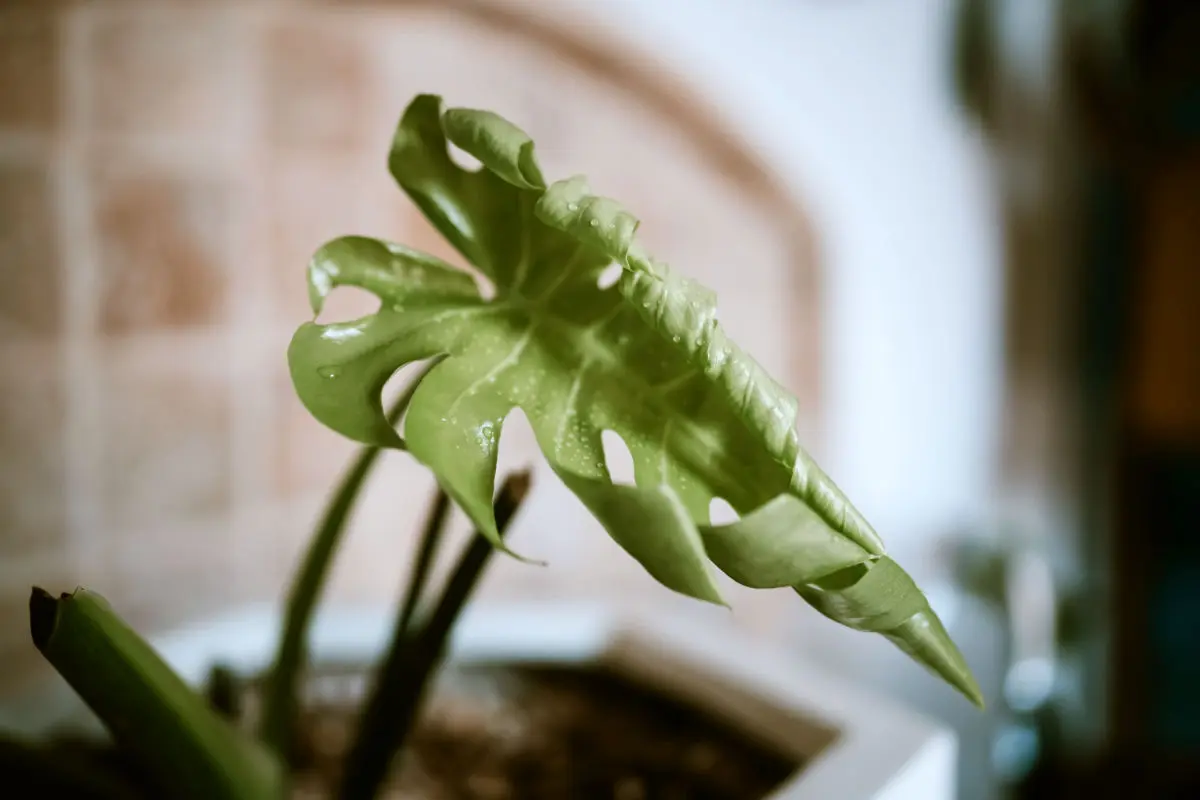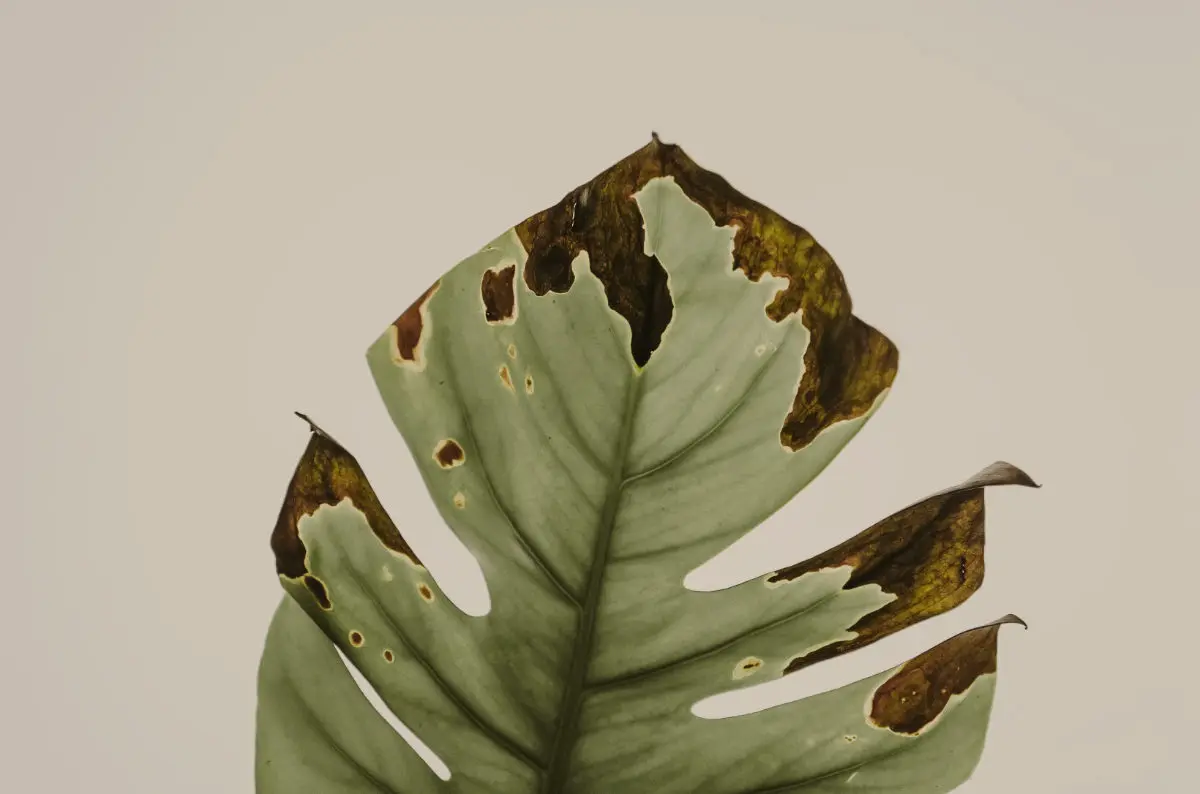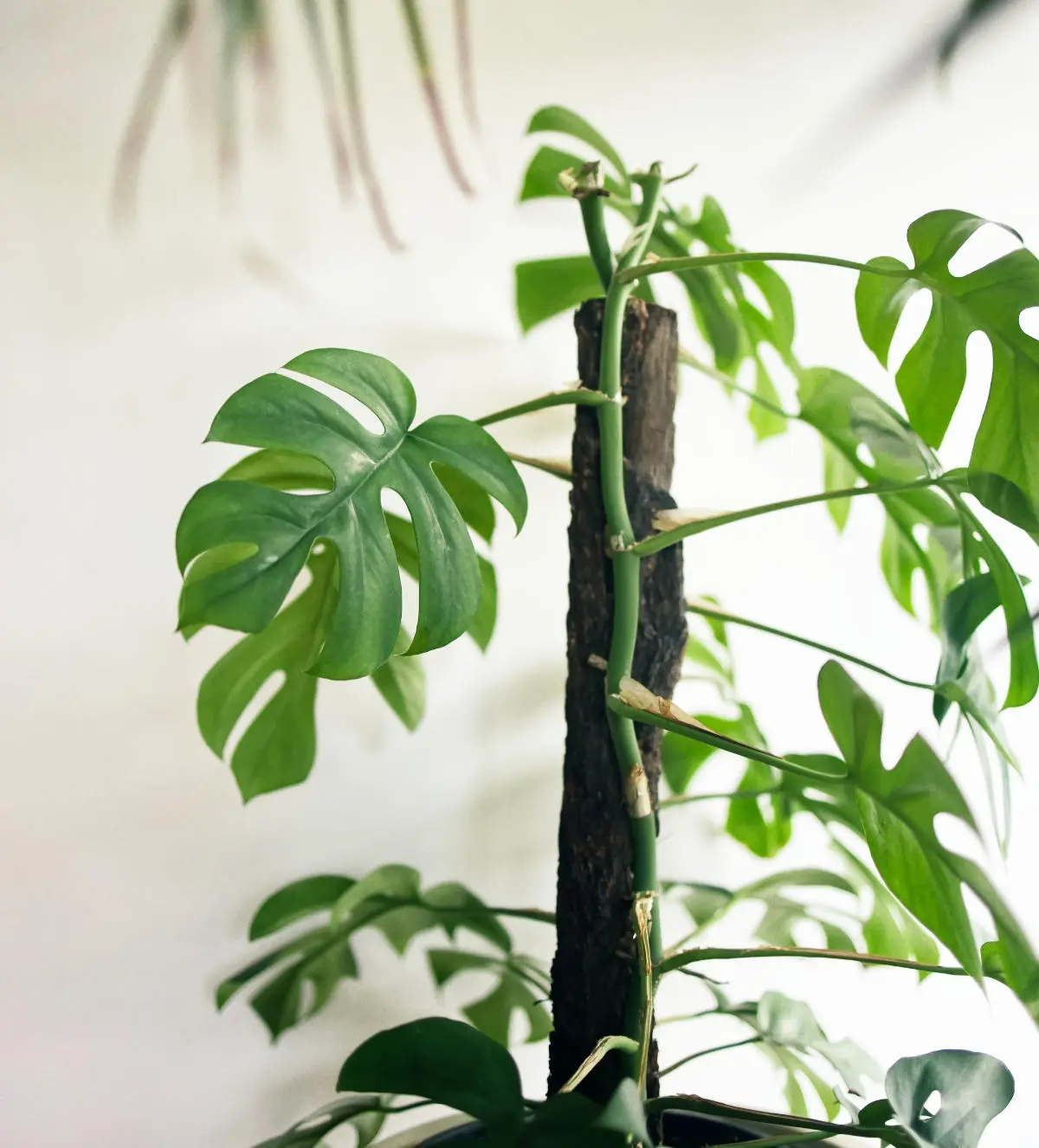Understanding Monstera Leaf Curl: Causes and Solutions
Understanding Monstera leaf curl is crucial for maintaining the health of your Monstera plant. In this article, we discuss the causes, symptoms, and treatments for this common foliage issue.
By Tobias Holm
Have you ever wondered why the leaves of your Monstera plant are curling? If so, you're not alone. Curling Monstera leaves can be a cause for concern for plant enthusiasts, but fear not! In this article, we are going to take a deep dive into the causes behind this curious phenomenon.
One possible reason for curling Monstera leaves is inadequate watering. Overwatering or underwatering can both lead to leaf curling as the plant tries to adapt to the moisture levels. Another common cause is temperature stress. Monstera plants prefer warm and humid conditions, so exposure to cold drafts or sudden temperature fluctuations can cause the leaves to curl.
Additionally, nutrient deficiencies can play a role in the curling of Monstera leaves. Lack of essential minerals, such as magnesium or calcium, can result in leaf curling and other signs of nutrient stress. Pest infestations and diseases can also cause leaves to curl, so it's important to inspect your plant for any signs of these issues.
By understanding the various causes of curling Monstera leaves, you can identify the problem and take steps to address it. So, let's delve into the fascinating world of Monstera plants and unravel the mystery behind their curling leaves.
Common causes of curling Monstera leaves
Overwatering and underwatering
One possible reason for curling Monstera leaves is inadequate watering. Overwatering or underwatering can both lead to leaf curling as the plant tries to adapt to the moisture levels. When a Monstera plant is overwatered, the roots become waterlogged, leading to a lack of oxygen in the soil. This can cause the leaves to curl as the plant tries to conserve water. On the other hand, underwatering can also cause leaf curling, as the plant tries to limit water loss by reducing the surface area of the leaves.
To avoid overwatering or underwatering your Monstera plant, it's important to find the right balance. The best way to determine when to water your Monstera is to check the moisture level in the soil. Stick your finger about an inch into the soil, and if it feels dry, it's time to water. However, if the soil feels moist, it's better to wait a bit longer. Additionally, make sure your Monstera is planted in well-draining soil and that the pot has drainage holes to prevent water from pooling at the roots.
Insufficient light
Monstera plants thrive in bright, indirect light. If the plant is not receiving enough light, the leaves may curl as a response to stress.
Humidity and temperature issues
Another common cause of curling Monstera leaves is temperature stress. Monstera plants prefer warm and humid conditions, so exposure to cold drafts or sudden temperature fluctuations can cause the leaves to curl. If your Monstera is placed near a window or a door that is frequently opened, it may be exposed to drafts that can stress the plant.
To provide the ideal environment for your Monstera, try to maintain a consistent temperature and humidity level. Keep your plant away from cold drafts, air conditioning units, or heating vents. If the air in your home is dry, you can use a humidifier or place a tray of water near your Monstera to increase humidity. In colder months, you may need to move your Monstera away from windows or use curtains to insulate it from cold drafts.
Nutrient deficiencies and imbalances
Additionally, nutrient deficiencies can play a role in the curling of Monstera leaves. Lack of essential minerals, such as magnesium or calcium, can result in leaf curling and other signs of nutrient stress. Monstera plants are heavy feeders and may require regular fertilization to thrive. If your Monstera is not receiving enough nutrients, it may show signs of deficiency, including curling leaves.
To ensure your Monstera is getting the necessary nutrients, it's important to fertilize it regularly. Use a balanced, water-soluble fertilizer and follow the instructions on the package for the appropriate dosage. It's best to fertilize your Monstera during the growing season, which is typically spring and summer. However, be careful not to overfertilize, as this can lead to nutrient imbalances and other issues.
Pests and diseases
Pest infestations and diseases can also cause leaves to curl, so it's important to inspect your plant for any signs of these issues. Common pests that can affect Monstera plants include spider mites, mealybugs, and aphids. These pests can feed on the leaves and cause damage, including curling. If you notice any pests on your Monstera, it's crucial to take immediate action to prevent the infestation from spreading.
In addition to pests, diseases such as root rot or fungal infections can also lead to leaf curling. These issues are often caused by overwatering or poor drainage. To prevent these problems, ensure that your Monstera is planted in well-draining soil and that the pot has drainage holes. Avoid overwatering and remove any dead or decaying plant material from the soil to prevent the growth of fungi.
Overwatering and underwatering
Now that we've explored the common causes of curling Monstera leaves, let's discuss how to identify the specific cause for your plant. Start by examining the overall condition of your Monstera. Is it receiving adequate light? Is the soil moist or dry? Are there any signs of pests or diseases? Answering these questions can help you narrow down the potential causes.
If you suspect overwatering or underwatering, check the moisture level in the soil and adjust your watering routine accordingly. If temperature stress is a concern, evaluate the location of your Monstera and make any necessary adjustments to provide a more stable environment. For nutrient deficiencies or imbalances, consider fertilizing your plant with a suitable fertilizer. And if pests or diseases are present, take appropriate measures to eliminate them.
If you're unsure about the specific cause or if the curling leaves persist despite your efforts, it may be helpful to consult with a plant expert or horticulturist. They can provide further guidance and help you troubleshoot the issue.
Humidity and temperature issues
Once you've identified the cause of the curling leaves, it's time to take action to treat and prevent further damage. Here are some general tips for treating and preventing curling Monstera leaves:
- Adjust your watering routine: Ensure that you're neither overwatering nor underwatering your Monstera. Stick to a consistent watering schedule and monitor the moisture level in the soil.
- Provide adequate humidity: Maintain a humid environment for your Monstera by using a humidifier or placing a tray of water near the plant. Mist the leaves occasionally to increase humidity.
- Check for nutrient deficiencies: If your Monstera shows signs of nutrient deficiencies, fertilize it with a balanced, water-soluble fertilizer. Follow the instructions on the package for the appropriate dosage.
- Inspect for pests and diseases: Regularly inspect your Monstera for signs of pests or diseases. If you notice any, take immediate action to eliminate them using appropriate methods, such as insecticidal soap or neem oil.
- Ensure proper placement: Keep your Monstera away from cold drafts, air conditioning units, or heating vents. Find a spot with indirect sunlight and maintain a consistent temperature.
By following these tips, you can help treat the curling leaves and prevent further damage to your Monstera plant.
Nutrient deficiencies and imbalances
In addition to addressing the specific causes of curling leaves, it's important to provide proper care and maintenance to keep your Monstera healthy overall. Here are some general guidelines:
- Light: Monstera plants thrive in bright, indirect sunlight. Place your plant near a window with filtered light or provide artificial grow lights if needed.
- Watering: Water your Monstera when the top inch of soil feels dry. Ensure that the pot has drainage holes to prevent water from pooling at the roots.
- Soil: Use well-draining soil that retains some moisture but doesn't become waterlogged. A mix of peat moss, perlite, and orchid bark can work well for Monstera plants.
- Fertilization: Fertilize your Monstera during the growing season with a balanced, water-soluble fertilizer. Follow the instructions on the package for the appropriate dosage.
- Pruning: Regularly inspect your Monstera for any dead or yellowing leaves and remove them. Pruning can help promote healthy growth and prevent the spread of diseases.
- Support: As your Monstera grows, it may require support to prevent the leaves from drooping. Use stakes or a moss pole to provide support and encourage upward growth.
By following these care guidelines, you can create an optimal environment for your Monstera and promote its overall health and well-being.
Pests and diseases
Certain pests, such as spider mites or aphids, can cause stress to the Monstera plant, leading to curling or distortion of the leaves.
Identifying the specific cause of curling leaves
Have you ever wondered why the leaves of your Monstera plant are curling? If so, you're not alone. Curling Monstera leaves can be a cause for concern for plant enthusiasts, but fear not! In this article, we are going to take a deep dive into the causes behind this curious phenomenon.
One possible reason for curling Monstera leaves is inadequate watering. Overwatering or underwatering can both lead to leaf curling as the plant tries to adapt to the moisture levels. Another common cause is temperature stress. Monstera plants prefer warm and humid conditions, so exposure to cold drafts or sudden temperature fluctuations can cause the leaves to curl.
Additionally, nutrient deficiencies can play a role in the curling of Monstera leaves. Lack of essential minerals, such as magnesium or calcium, can result in leaf curling and other signs of nutrient stress. Pest infestations and diseases can also cause leaves to curl, so it's important to inspect your plant for any signs of these issues.
By understanding the various causes of curling Monstera leaves, you can identify the problem and take steps to address it. So, let's delve into the fascinating world of Monstera plants and unravel the mystery behind their curling leaves.
Treating and preventing curling Monstera leaves
Pests and diseases are a common cause of curling Monstera leaves. Spider mites, aphids, and mealybugs are some of the most common pests that can infest Monstera plants. These pests feed on the plant's sap, causing damage to the leaves and overall plant health. As a defense mechanism, the leaves may curl as a response to the stress caused by the infestation.
To identify whether pests are the cause of your Monstera leaves curling, inspect the plant carefully. Look for signs of tiny crawling insects, webbing, or sticky residue on the leaves. You may also notice discoloration or tiny holes in the affected leaves. If you find any of these signs, it's important to take immediate action to control the infestation.
Treating and preventing pest infestations involves a multi-step approach. Start by isolating the affected plant to prevent the pests from spreading to other plants. Then, gently wipe the leaves with a damp cloth to remove any visible pests. For more severe infestations, consider using organic insecticidal soaps or horticultural oils. Regularly monitoring your plants and maintaining good hygiene practices can help prevent future infestations.
Proper care and maintenance for healthy Monstera plants
Identifying the specific cause of curling Monstera leaves can sometimes be challenging, as multiple factors can contribute to this issue. However, by closely observing your plant and considering the environmental conditions, you can narrow down the possibilities.
If your Monstera plant is consistently being watered too much or too little, you can check for signs of overwatering or underwatering. Overwatered plants may have yellowing leaves, root rot, and a waterlogged soil. On the other hand, underwatered plants may have dry, brown, or crispy leaves. Adjusting your watering schedule and ensuring proper drainage can help alleviate this issue.
Temperature stress can also cause Monstera leaves to curl. Cold drafts, air conditioning, or sudden temperature fluctuations can shock the plant and lead to curling leaves. To prevent temperature stress, keep your Monstera away from drafts and maintain a relatively stable temperature and humidity level. Providing adequate warmth and humidity can promote healthy leaf growth.
Nutrient deficiencies can manifest as curling Monstera leaves. Lack of essential minerals, such as magnesium or calcium, can cause leaf curling and other signs of nutrient stress. Conduct a soil test to determine if your plant is lacking any important nutrients. If deficiencies are detected, consider using a balanced fertilizer or adjusting your plant's nutrient intake through other means, such as foliar feeding.
Conclusion and final thoughts
Treating curling Monstera leaves depends on the underlying cause. Once you have identified the specific issue, you can take appropriate steps to address it and promote healthy leaf growth.
If pests are the cause, follow the steps mentioned earlier for controlling and preventing infestations. Regularly inspect your plants for signs of pests, and take immediate action if any are found. Maintaining a clean and pest-free environment is key to preventing future infestations.
For issues related to watering, adjust your watering routine based on the specific needs of your Monstera plant. Ensure that the soil is well-draining and never let the plant sit in standing water. Use your finger or a moisture meter to check the soil moisture level before watering, and water only when the top inch of soil feels dry.
To address temperature stress, provide your Monstera with a stable and suitable environment. Avoid placing the plant near cold drafts or air conditioning vents. If necessary, use a humidifier to maintain the desired humidity level. Creating a consistent and comfortable environment will help prevent curling leaves caused by temperature fluctuations.
In the case of nutrient deficiencies, you can supplement your plant's diet with a balanced fertilizer. Choose a fertilizer specifically formulated for indoor plants or foliage plants. Follow the instructions provided on the product label, as overfertilization can cause more harm than good. Regularly monitor your plant's nutrient status and adjust the fertilizer application as needed.



